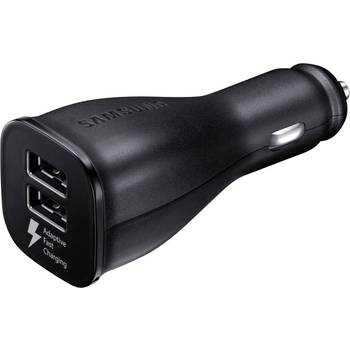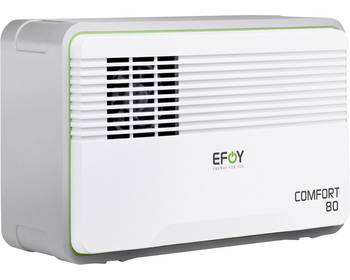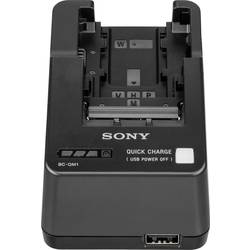Guide
This text is machine translated.
About chargers
What was a smartphone, camera and car For them to work, they need a rechargeable battery or a rechargeable battery. To find out how to find the right battery charger and what criteria you should pay attention to when you buy, please read our guide.
Overview of chargers
Important criteria when purchasing chargers
Our practical tip: Charge Li-Ion batteries correctly
FAQ - Charging Devices Frequently Asked Questions
Overview of chargers

There is a wide range of battery chargers available today. Keeping track of the picture can be tricky. To help you find the right model for your purposes, we will first introduce you to the most important types of chargers.
A charger for the mobile phone probably has everyone at home: These compact plug-in chargers can quickly recharge smartphones, tablets and other compatible devices via micro-USB or USB-C. A power bank with which you can also charge your mobile phone or other devices proves to be convenient, especially when there is no socket nearby. This is a compact rechargeable battery, which functions as a mobile phone charger or for other mobile devices while traveling. Current mobile phones can also be supplied with power wirelessly with an induction charger. USB chargers allow you to charge one or more devices via USB cable. They are available as plug-in, table-top and built-in devices. Special car adapters are also available, which enable you to charge a smartphone in the car, for example, if there is no USB connection.
But that is not the end of the choice. For example, if you use a wall clock with a AAA battery in your home, you need a so-called round cell charger. Depending on the model, these devices can charge rechargeable batteries of different sizes, such as AA or AAA micro. You will then only need one battery charger for all Ni-MH/Ni-CD batteries used in the household.

Many cameras have special rechargeable batteries, for which there are also special chargers, which ensure a reliable and gentle charging of the energy cell. Older Apple products also require proprietary charging adapters. This is the case, for example, for devices with a 30-pin or MagSafe connector. Newer models, on the other hand, use the USB-C standard and are no longer necessarily dependant on an Apple charger. The suitable battery chargers are also available for tools operated with rechargeable batteries. High-quality machines usually contain long-life lithium-ion batteries, which usually require manufacturer-specific charging stations.
Not to forget: Chargers for car and truck batteries and battery charging systems. In vehicles, lead-acid batteries are usually installed, which are charged with a charging cable with alligator clips. Lead-acid battery refresher can increase the capacity of the battery after longer use by reducing sulphate deposits. Special lead-acid battery chargers are available for batteries used away from vehicles.
In addition, compact fuel cells are in trend, which can charge devices connected via USB. The electricity is generated with hydrogen or methanol. Solar chargers are also particularly environmentally friendly. They have a large-format integrated battery, which is powered by solar energy and can supply energy to other devices when charged. A thermoelectric generator generates electrical energy based on the so-called Seebeck effect. Several thermoelectric modules are installed in the base plate. When the base plate is heated, the difference in temperature to the container above it, which is filled with water, generates electricity. Last but not least, a variety of universally applicable charging and discharging devices as well as model-specific model construction chargers are available. In addition, you will find a large selection of accessories for chargers in our shop.

Important criteria when purchasing chargers

There are a lot of things to consider when purchasing battery chargers or battery chargers. Chargers are usually incompatible with each other; for example, a Li-Ion charger cannot charge a lead-acid battery. You must have a battery charger that matches the type of battery you are using. Furthermore, a sufficient charging current must be ensured; this applies especially to fast chargers for mobile phones. For round cell chargers, make sure that the required battery size is supported and that there are sufficient charging slots available. If you want to charge end devices with built-in rechargeable battery, you need suitable adapter cables (micro USB, USB-C etc.) to connect your tablet or smartphone to the charger. Proprietary connectors are used especially with older Apple devices. There are also a number of features to consider: Mobile chargers should, for example, be robust and protected against splashing water, so that there is no short circuit on the way.
The mains cable must be dimensioned in such a way that the charger can be used at the intended location. Find out if batteries may be required for trucks or cars. Special additional functions such as status displays can be useful for chargers for model-built rechargeable batteries. If you want a long service life of your battery charger and your batteries, you should use an intelligent charger. Unlike simple chargers, these monitor the charging process and switch off automatically to prevent overcharging of the batteries. In addition, the intelligent models often have a battery defect detection, an integrated LC-display, which informs about the charging status and charging current or at least via an LED-display.
Our practical tip: Charge smartphone batteries correctly
In the ideal case, the charging status of your mobile phone should always be between 20 and 80 percent for Li-Ion batteries in order to limit wear. Although lithium-ion batteries are not affected by the dreaded memory effect, unlike NiCd batteries, they also have a limited number of charge cycles. In order to save the mobile phone battery, you should also unplug the power adapter from the mains socket after the charging process has been completed.
FAQ - Charging Devices Frequently Asked Questions
What was deep discharge?
A deep discharge is a discharge that goes beyond the intended measure of a battery and falls significantly below the rated voltage of the battery. Many current devices offer protective circuits that provide automatic shutdown before a deep discharge occurs, but not all of them. Therefore, you should never allow a battery-powered device to be completely discharged. Lithium batteries in particular can be irreparably damaged even after a deep discharge. The following applies in principle: Whether lead, Li-ion, NiCd or NiMH rechargeable batteries, a deep discharge must be avoided.

How do ich store rechargeable batteries correctly?
The correct storage of a rechargeable battery depends on the type. Unused lithium-ion batteries should ideally be stored at a charge level of between 30 and 50 percent and in a cool place. High temperatures and storage in a fully charged state are detrimental to the lifetime. Ni-MH and NiCd batteries should also be stored in a cool place. The charging status may be lower, however, and 30 to 40 percent are ideal. Due to the faster self-discharge, recharging is recommended for longer storage periods in order to avoid deep discharge. Lead-acid batteries should always be fully charged. In this case, too, continuous self-discharge occurs, which was necessary for occasional recharging during prolonged storage.